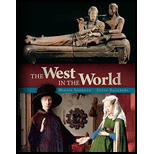
The viscosity of the soda-lime glass at the temperature of
Answer to Problem 102AAP
The viscosity of the soda-lime glass at the temperature of
Explanation of Solution
Write the equation involving the viscosity to temperature for a viscous flow in the glass.
Here, viscosity of the glass is
Conclusion:
At the temperature of
Here, viscosity of the soda-lime glass at the temperature of
At the temperature of
Here, viscosity of the soda-lime glass at the temperature of
Divide Equation (II) by Equation (III).
Substitute
Thus, the viscosity of the soda-lime glass at the temperature of
Want to see more full solutions like this?
Chapter 11 Solutions
Foundations of Materials Science and Engineering
- Sodium chloride (NaCI) is a ceramic that has the following crystal structure. Given: R(Na*)= 0.098 nm and R(CI")=0.181 Calculate the lonic Packing Factor (IPF) of NaCl? O Nat Select one: O a. 0.14 O b. 0.66 c. 0.51 O d. 0.74 O e. 0.41 O f. 0.47 O g. 0.21arrow_forwardAssume the total heat of vaporization (per gram) of water can be used to supply the energy needed to tear 1 gram of water molecules apart from each other. What is the ratio of energy needed per molecule to kT where 1.38x10^-23 J/K?arrow_forwardA 1.02den silk fiber has reached its maximum tenacity value. How many grams (force) would it take to rupture such fiber when dry? Provide your answer with two (2) decimal positions and no unit Answer:arrow_forward
- Polyethylene Terephthalate or PET is a linear semicrystalline thermoplastic polymer widely used in food packaging. Calculate the density of this polymer when the total crystallinity is 65.4%. The density for the totally amorphous PET material is 1.33 g/cm³, and the density of the totally crystalline is 1.44 g/cm³. 1.38 g/cm³ 1.40 g/cm³ 1.42 g/cm³ 1.80 g/cm³ None of the abovearrow_forwardSodium chloride (NaCI) is a ceramic that has the following crystal structure. Given: R(Na*)= 0.098 nm and R(CI")=0.181 Calculate the lonic Packing Factor (IPF) of NaCl? O Na CH Select one: O a. 0.14 O b. 0.66 C. 0.51 O d. 0.74 O e. 0.41 O f. 0.47 g. 0.21arrow_forwardWhat is relation between bulk modulus and elastic modulus?arrow_forward
- Nylon 6,6 is a thermoplastic polymer with high mechanical strength, high resistance to chemical environments, and good stability under heat. Therefore, it is well suited to be used in 3D structural objects. A cylindrical nylon 6,6 pipe is made by injection molding. The pipe is 1 m long with an outer diameter of 8cm, and a thickness of 2mm. The crystallinity of the pipe is 25%. The density and associated percent crystallinity for two nylon 6,6 samples are measured as below: ρ(g/cm3) crystallinity (%) 1.190 67 1.155 44 Calculate the density of this pipe, which has 25% crystallinity.arrow_forwardNylon 6,6 is a thermoplastic polymer with high mechanical strength, high resistance to chemical environments, and good stability under heat. Therefore, it is well suited to be used in 3D structural objects. A cylindrical nylon 6,6 pipe is made by injection molding. The pipe is 1 m long with an outer diameter of 8cm, and a thickness of 2mm. The crystallinity of the pipe is 25%. The density and associated percent crystallinity for two nylon 6,6 samples are measured as below: ρ(g/cm3) crystallinity (%) 1.190 67 1.155 44 If the degree of polymerization is 500, calculate the number of chains in the pipe. (Assume the chains are equal in length).arrow_forwardNickel oxide (NiO) is a ceramic that has the same crystal structure as NaCl. Given: R(Ni2+)= 0.075 nm and R(02)=0.132 Calculate the lonic Packing Factor (IPF) of NiO? O Na CI Select one: a. 0.47 b, 0.74 c. 0.64 d. 0 12 e. 0.14 f. 0.21 g. 0.41arrow_forward
- (Porosity). A dry rock weighs 240 grams and has a bulk density of 2.4 grams per cubic centimeter. When saturated with pure water at room temperature (T=25°C), it weighs 250 grams. At room temperature, specific volume of water is 1.00295 x10-3 m3/kg. Calculate the porosity of the sample. (Permeability). A cylindrical core sample of 1 cm length and 1 cm2 cross-section has upstream and downstream pressures of 2 atm and 1 atm, respectively, during steady state flow of water at 0.997 g/s at room temperature. Calculate the permeability of the core. Note: Water @ 25°C, viscosity = 1 cp, density of water = 0.997 g/cm3. SHOW SOLUTIONS PLSarrow_forwardIf the viscosity of SCl2 gaseous molecule at 20.0 °C and 1 atm. is 132 pP. what is the viscosity of 7cz gaseous molecule in pP at the same temperature and pressure assuming both molecules having the same cross section? (MM of 35c - 35.0g mol MM of 37a - 37.0 g mol1)arrow_forwardYou are examining two materials with the same density. One has a BCC crystal structure, and one has a HCP crystal structure. Which do you expect will have more rapid diffusion?arrow_forward
 Elements Of ElectromagneticsMechanical EngineeringISBN:9780190698614Author:Sadiku, Matthew N. O.Publisher:Oxford University Press
Elements Of ElectromagneticsMechanical EngineeringISBN:9780190698614Author:Sadiku, Matthew N. O.Publisher:Oxford University Press Mechanics of Materials (10th Edition)Mechanical EngineeringISBN:9780134319650Author:Russell C. HibbelerPublisher:PEARSON
Mechanics of Materials (10th Edition)Mechanical EngineeringISBN:9780134319650Author:Russell C. HibbelerPublisher:PEARSON Thermodynamics: An Engineering ApproachMechanical EngineeringISBN:9781259822674Author:Yunus A. Cengel Dr., Michael A. BolesPublisher:McGraw-Hill Education
Thermodynamics: An Engineering ApproachMechanical EngineeringISBN:9781259822674Author:Yunus A. Cengel Dr., Michael A. BolesPublisher:McGraw-Hill Education Control Systems EngineeringMechanical EngineeringISBN:9781118170519Author:Norman S. NisePublisher:WILEY
Control Systems EngineeringMechanical EngineeringISBN:9781118170519Author:Norman S. NisePublisher:WILEY Mechanics of Materials (MindTap Course List)Mechanical EngineeringISBN:9781337093347Author:Barry J. Goodno, James M. GerePublisher:Cengage Learning
Mechanics of Materials (MindTap Course List)Mechanical EngineeringISBN:9781337093347Author:Barry J. Goodno, James M. GerePublisher:Cengage Learning Engineering Mechanics: StaticsMechanical EngineeringISBN:9781118807330Author:James L. Meriam, L. G. Kraige, J. N. BoltonPublisher:WILEY
Engineering Mechanics: StaticsMechanical EngineeringISBN:9781118807330Author:James L. Meriam, L. G. Kraige, J. N. BoltonPublisher:WILEY





